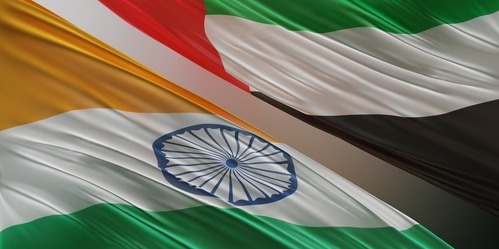Will US tariffs prompt India to pivot to the GCC?
Indian businesses and exporters may steer a course towards GCC countries to circumvent steep US tariffs, according to analysts.
US President Donald Trump signed an executive order in August, imposing an additional 25% tariff on imports from India, in addition to other duties, fees, taxes, exactions, and applicable charges.
The White House cited India’s continued purchase of Russian oil, as the rationale for the move, calling it a counter to Russia’s threat to US national security and foreign policy. Russia accounts for about 34% of India’s crude imports.
Indian exports to the US fell 11.93% year-on-year in September, and a whopping 20.39% on the previous month, as the impact of the tariffs began to take shape.
The steepest impact will fall on labour-intensive sectors where the US accounts for a large share of India’s exports - including carpets (58%), textiles and garments (35%), gems and jewellery (39%), and shrimp (32%), Ajay Srivastava, founder of the Global Trade Research Initiative, a Delhi-based think tank, tells Salaam Gateway.
“These industries have thin margins and little room to absorb a 50% tariff shock.”
The impact may drive Indian companies to veer towards other lucrative markets, including the GCC.
“Several Indian firms, particularly in gems and jewellery and electronics assembly, are exploring a shift of production and processing bases to the UAE and other GCC countries to remain cost competitive. The region’s low-tariff access to key markets and strong logistics networks makes it an attractive fallback option,” adds Srivastava.
“Sectors where production and finishing facilities can be quickly established are best positioned to reroute exports via the GCC.”
Krishna Bhimavarapu, an economist at US-headquartered State Street investment Management adds that while there is a lot of uncertainty, there is a good chance for Indian firms to explore the GCC markets, especially given the positive trade dialogue that has been happening.
India has strong economic and diplomatic ties with the Gulf countries with bilateral trade worth $178.56 billion in FY2024-25.
Indian exports to the UAE soared 24.33% year-on-year in September, rising from last year’s $2.8 billion to $3.5 billion last month. Exports to Saudi Arabia increased 14.2% last month, too, according to data released by the Indian ministry of commerce and industry.
“Dubai and Abu Dhabi, already major re-export hubs, are emerging as natural staging points for Indian firms diversifying away from direct US shipments,” says Srivastava.
The six-nation GCC hosts north of nine million Indian expatriates, making it an invigorating market for the Indian diaspora and products. The influx of Indian businesses into the GCC has continued to gather momentum, with over 9,000 joining Dubai Chamber of Commerce during the first six months of the year.
Meanwhile, over 40 Indian companies have established regional headquarters in Saudi Arabia.
The UAE will also be home to Bharat Mart, a huge facility spread across 2.7 million square feet designed to provide new market opportunities to Indian manufacturers and exporters.
Trade alliances are in the ascendant, too - India signed a comprehensive economic partnership agreement (CEPA) with the UAE in May 2022, to reduce or eliminate tariffs on the vast majority of products. The Southeast Asian country has recenty concluded CEPA negotiations with the sultanate of Oman and is aiming to lock in a free trade agreement with Qatar by third quarter of next year to push bilateral trade to $30 billion by 2030.
Among reports of an imminent US-India trade deal, will such a pact, if realized, stall the influx of Indian companies looking to step up shop in the GCC?
“I don't think so,” says Bhimavarapu. “Because there is also a trade dialogue with the GCC countries alongside with the US.”

Salaam Gateway